Abstract
1 The residual effects of two benzodiazepines, nitrazepam (10 mg) and flurazepam hydrochloride (30 mg), and pentobarbitone sodium (200 mg) were studied by adaptive tracking and by reaction time. Performance was measured at 10 h, 13 h, 16 h, 19 h and 34 h after ingestion of each drug. Impaired performance on adaptive tracking was observed at 10 h, 13 h, 16 h and 19 h after nitrazepam and pentobarbitone sodium and at 10 h, 13 h and 16 h after flurazepam hydrochloride. Enhanced performance was observed at 34 h after nitrazepam and pentobarbitone sodium. 2 Increased reaction time persisted to 16 h after nitrazepam, flurazepam hydrochloride and pentobarbitone sodium and reaction time was also increased at 34 h after nitrazepam and pentobarbitone sodium. 3 During the morning immediately after ingestion, the subjects as a group were able to differentiate correctly between placebo and drugs, but they were not able to assess accurately the persistence of the residual effects of nitrazepam and pentobarbitone sodium. 4 Flurazepam hydrochloride would appear to be a more promising benzodiazepine than nitrazepam for use as a hypnotic by persons involved in skilled activity. There was a rapid recovery of performance during the afternoon and, unlike pentobarbitone sodium and nitrazepam, subjects retained the ability to recognize impaired skill.
Full text
PDF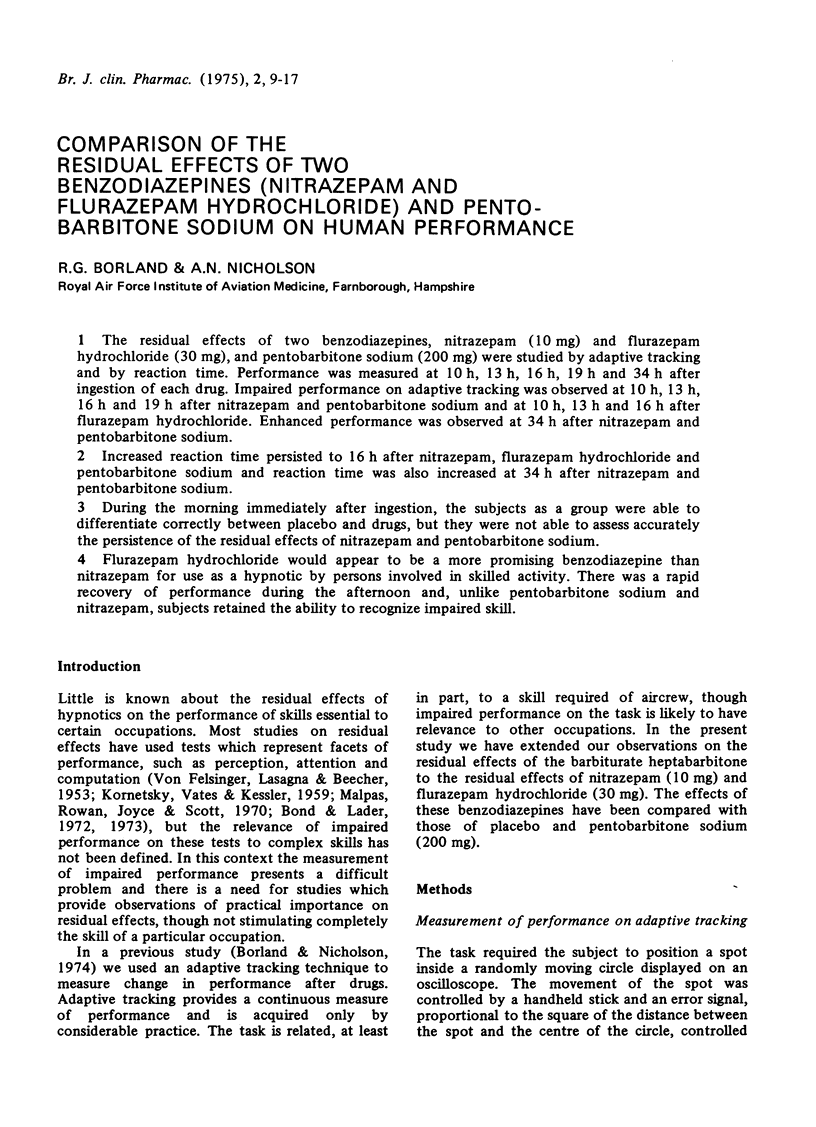

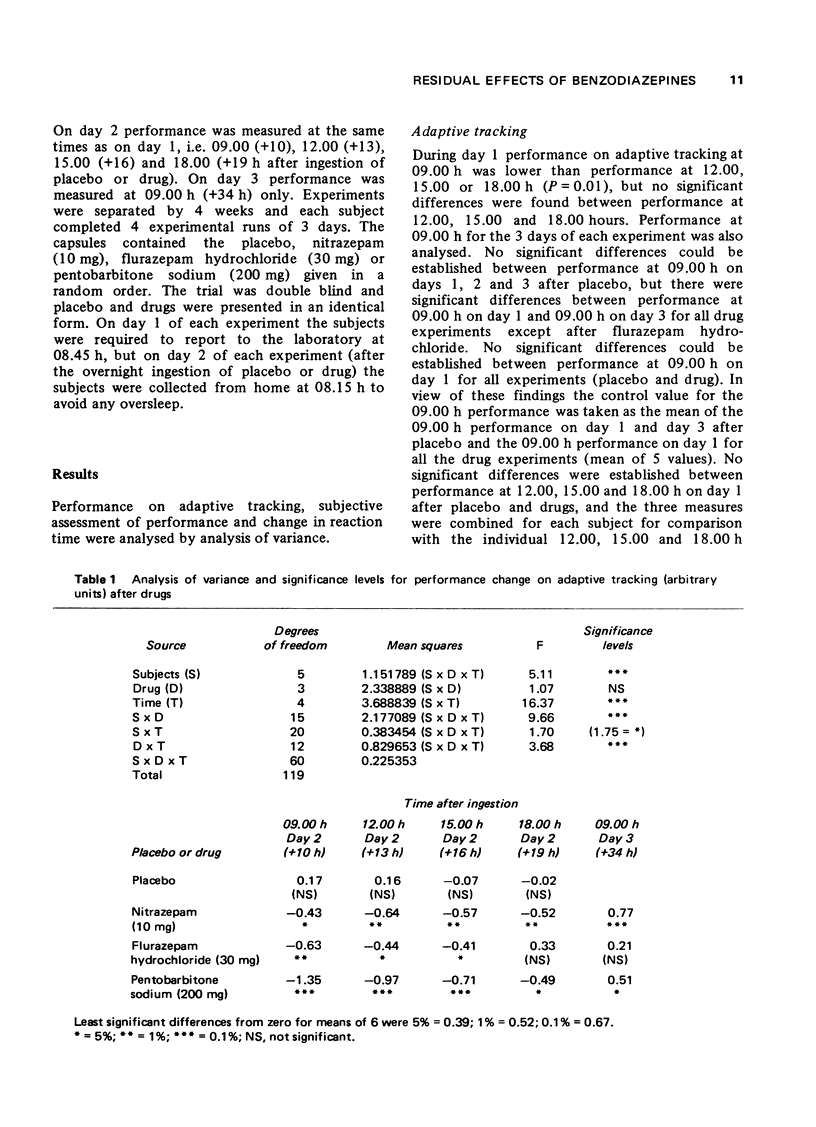

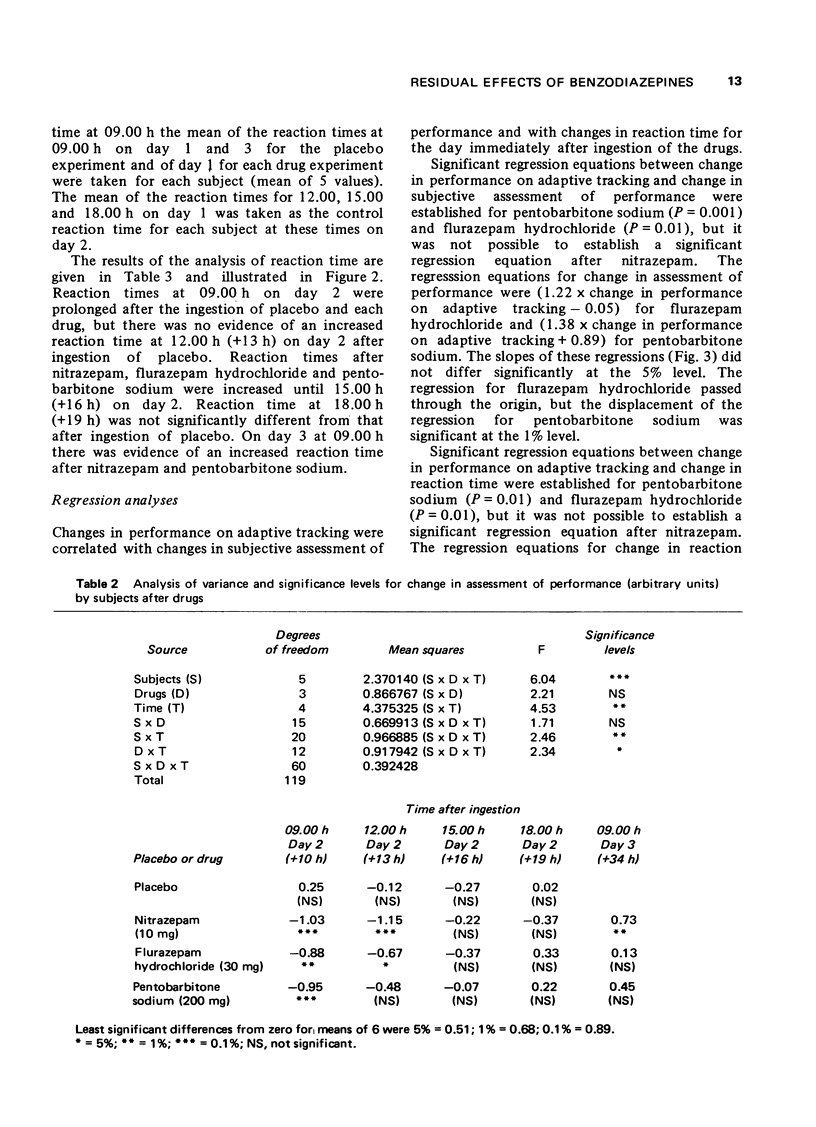
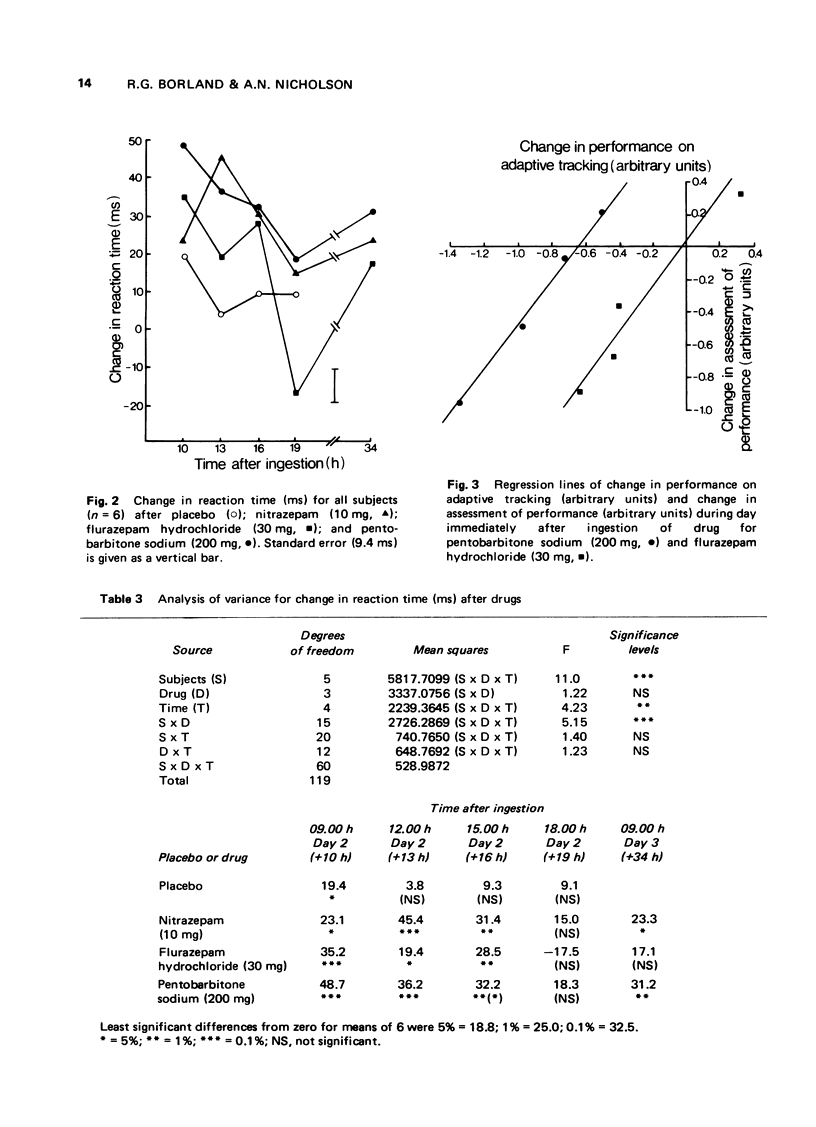

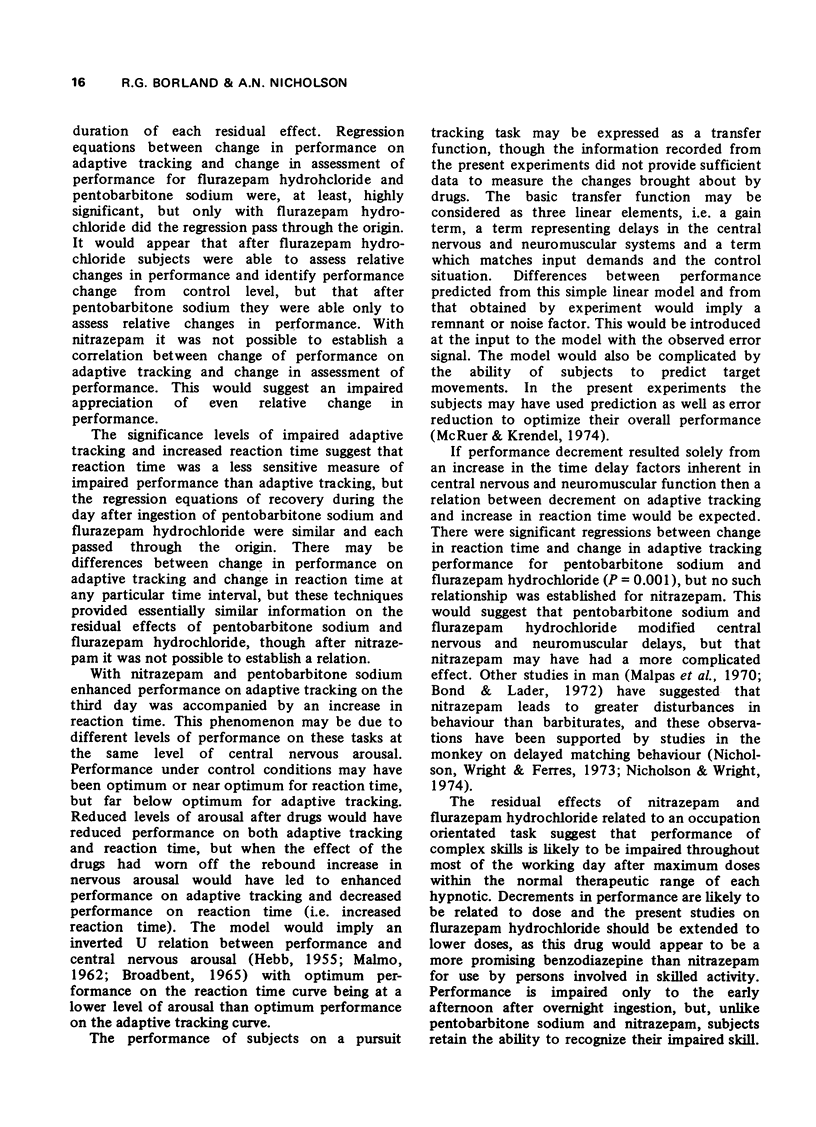
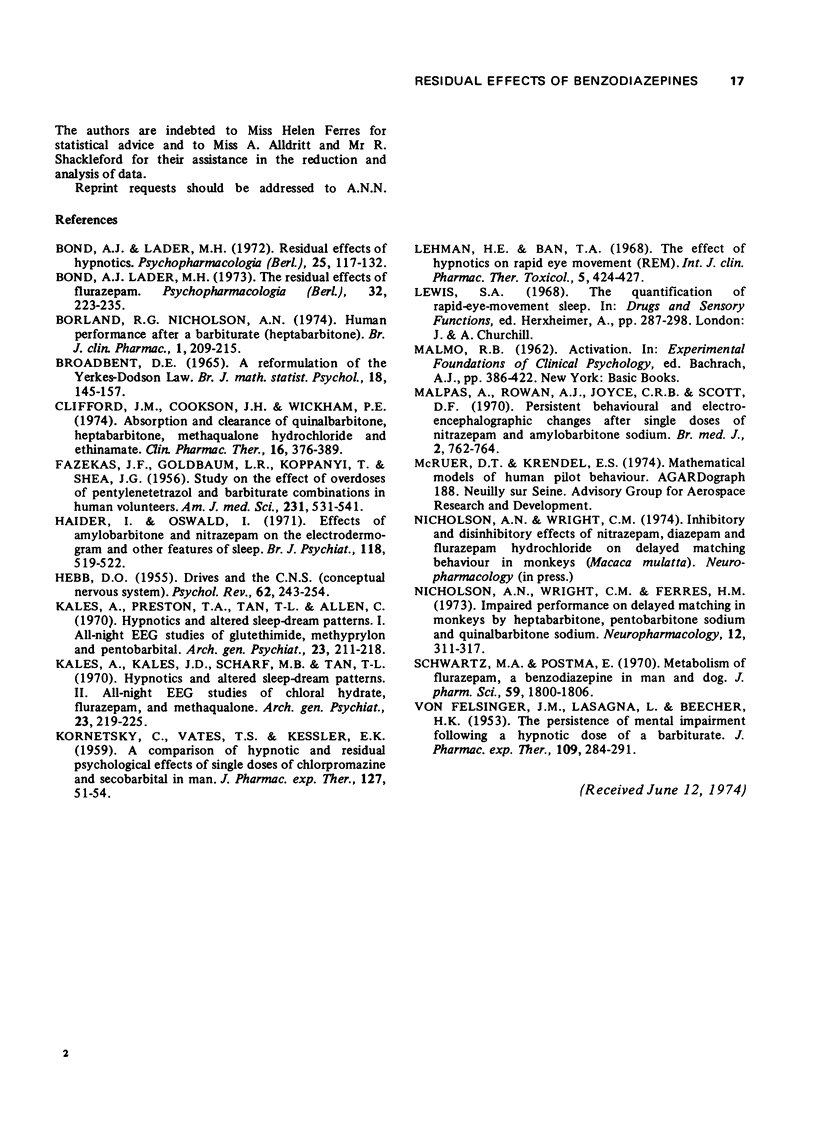
Selected References
These references are in PubMed. This may not be the complete list of references from this article.
- Bond A. J., Lader M. H. Residual effects of hypnotics. Psychopharmacologia. 1972;25(2):117–132. doi: 10.1007/BF00423189. [DOI] [PubMed] [Google Scholar]
- Bond A. J., Lader M. H. The residual effects of flurazepam. Psychopharmacologia. 1973 Sep 28;32(3):223–235. doi: 10.1007/BF00422145. [DOI] [PubMed] [Google Scholar]
- Clifford J. M., Cookson J. H., Wickham P. E. Absorption and clearance of secobarbital, heptabarbital, methaqualone, and ethinamate. Clin Pharmacol Ther. 1974 Aug;16(2):376–389. doi: 10.1002/cpt1974162376. [DOI] [PubMed] [Google Scholar]
- FAZEKAS J. F., GOLDBAUM L. R., KOPPANYI T., SHEA J. G. Study of the effect of overdoses of pentylenetetrazol and barbiturate combinations in human volunteers. Am J Med Sci. 1956 May;231(5):531–541. doi: 10.1097/00000441-195605000-00006. [DOI] [PubMed] [Google Scholar]
- HEBB D. O. Drives and the C.N.S. (conceptual nervous system). Psychol Rev. 1955 Jul;62(4):243–254. doi: 10.1037/h0041823. [DOI] [PubMed] [Google Scholar]
- Haider I., Oswald I. Effects of amylobarbitone and nitrazepam on the electrodermogram and other features of sleep. Br J Psychiatry. 1971 May;118(546):519–522. doi: 10.1192/bjp.118.546.519. [DOI] [PubMed] [Google Scholar]
- KORNETSKY C., VATES T. S., KESSLER E. K. A comparison of hypnotic and residual psychological effects of single doses of chlorpromazine and secobarbital in man. J Pharmacol Exp Ther. 1959 Sep;127:51–54. [PubMed] [Google Scholar]
- Kales A., Kales J. D., Scharf M. B., Tan T. L. Hypnotics and altered sleep-dream patterns. II. All-night EEG studies of chloral hydrate, flurazepam, and methaqualone. Arch Gen Psychiatry. 1970 Sep;23(3):219–225. doi: 10.1001/archpsyc.1970.01750030027005. [DOI] [PubMed] [Google Scholar]
- Kales A., Preston T. A., Tan T. L., Allen C. Hypnotics and altered sleep-dream patterns. I. All-night EEG studies of glutethimide, methyprylon, and pentobarbital. Arch Gen Psychiatry. 1970 Sep;23(3):211–218. doi: 10.1001/archpsyc.1970.01750030019004. [DOI] [PubMed] [Google Scholar]
- Malpas A., Rowan A. J., Boyce C. R., Scott D. F. Persistent behavioural and electroencephalographic changes after single doses of nitrazepam and amylobarbitone sodium. Br Med J. 1970 Jun 27;2(5712):762–764. doi: 10.1136/bmj.2.5712.762. [DOI] [PMC free article] [PubMed] [Google Scholar]
- Nicholson A. N., Wright C. M., Ferres H. M. Impaired performance on delayed matching in monkeys by heptabarbitone, pentobarbitone sodium and quinalbarbitone sodium. Neuropharmacology. 1973 Apr;12(4):311–317. doi: 10.1016/0028-3908(73)90090-7. [DOI] [PubMed] [Google Scholar]
- Schwartz M. A., Postma E. Metabolism of flurazepam, a benzodiazepine, in man and dog. J Pharm Sci. 1970 Dec;59(12):1800–1806. doi: 10.1002/jps.2600591220. [DOI] [PubMed] [Google Scholar]
- VON FELSINGER J. M., LASAGNA L., BEECHER H. K. The persistence of mental impairment following a hypnotic dose of a barbiturate. J Pharmacol Exp Ther. 1953 Nov;109(3):284–291. [PubMed] [Google Scholar]


